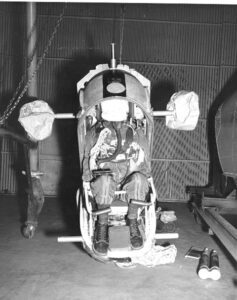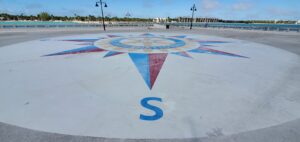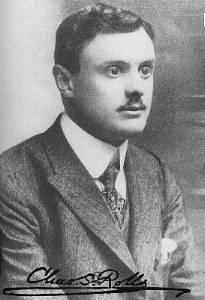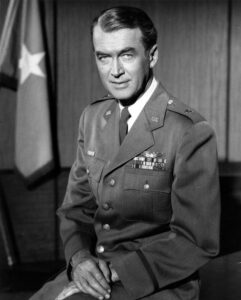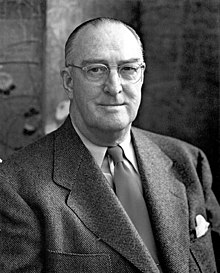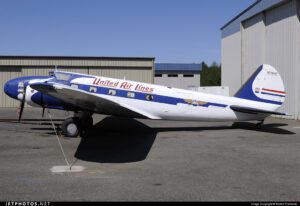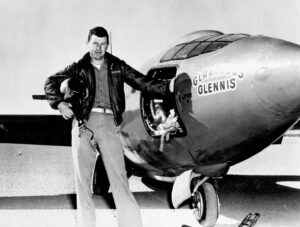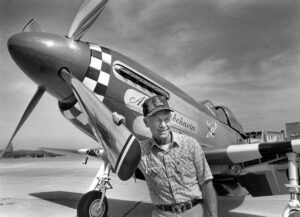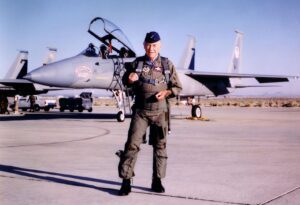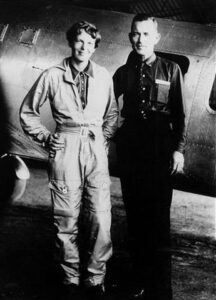In the annals of aviation history, certain names stand out for their pioneering spirit and remarkable contributions to the field. One such figure is Robert Stanley, an aviation engineer, test pilot, and innovator whose work has had a lasting impact on the development of modern aircraft. While his name may not be as universally recognized as some of his contemporaries, Stanley’s legacy in aviation is profound, and his contributions continue to influence the industry today.
Early Life of Robert Stanley and his Passion for Flight

Robert Milton Stanley was born on August 19, 1912, in Cañon City, Colorado. From a young age, Stanley exhibited a keen interest in engineering and aviation, inspired by the rapid advancements in aircraft technology during the early 20th century. He pursued his passion by studying mechanical engineering at the U.S. Naval Academy, where he graduated in 1933. Afterward, he began his career as a naval aviator, which laid the groundwork for his future contributions to aviation.
Contributions to Jet-Powered Flight
Perhaps Robert Stanley’s most significant contribution to aviation was his role in the development and testing of jet-powered aircraft in the United States. In the early 1940s, as World War II raged in Europe, the U.S. military recognized the need to explore new technologies that could give them an edge in the conflict. Jet propulsion was one such technology, and Stanley was at the forefront of its development.
In 1942, Stanley became the first American to fly a jet-powered aircraft when he took the Bell XP-59A Airacomet on its maiden flight. The XP-59A was the United States’ first jet aircraft, and Stanley’s successful test flight marked a significant milestone in aviation history. His courage and skill as a test pilot helped to demonstrate the feasibility of jet propulsion, paving the way for the development of more advanced jet-powered aircraft in the years to come.
Stanley’s work with the XP-59A was just the beginning. He continued to contribute to the advancement of jet technology throughout his career, working closely with engineers and designers to refine and improve the performance of jet engines and airframes. His efforts were instrumental in the rapid evolution of jet aircraft during the 1940s and 1950s, a period that saw the transition from propeller-driven planes to high-speed jet fighters and bombers.
Engineering Innovations and Leadership of Robert Stanley
In addition to his work as a test pilot, Robert Stanley was also a gifted engineer and inventor. He held several patents related to aircraft design and engineering, including innovations in control systems and aerodynamics. His technical expertise and inventive mind allowed him to contribute to a wide range of projects, from military aircraft to civilian aviation.
Several prototype systems developed by Stanley Aviation included innovations aimed at improving pilot comfort and safety during long missions. One such system featured a seat with multiple ergonomic adjustments to minimize pilot fatigue. Another notable design was the seat for the Ryan VTO aircraft, which needed to take off and land vertically. This seat could tilt forward significantly, providing the pilot with improved visibility during vertical operations.
The Stanley Aviation Canopy Capsule was an advanced design that positioned the pilot in a supine posture, encapsulated within the windscreen area to protect against windblast. This innovative approach offered enhanced protection and comfort during high-speed flight.
Stanley also developed the Supersonic Capsule, initially intended for the Convair B-58 Hustler. Unlike the Canopy Capsule, this design was more conventional, featuring a seat enclosed by a clamshell-like cover and equipped with special stabilizing devices. The capsule created a shirtsleeve environment for the crew and could be pressurized in the event of cabin pressure loss at high altitudes, allowing the aircraft to be safely controlled to a lower altitude where the capsule could be reopened. Additionally, the capsule included a comprehensive survival kit and could act as a raft in the event of a water landing. The Supersonic Capsule underwent extensive live testing with chimpanzees, bears, and humans, making it one of the most thoroughly tested systems of its time. (During that period, live testing with animals was common in many industries, including aviation. Today, computer simulations and instrumented mannequins have replaced the use of humans and animals in ejection test programs.)
Another unique design from Stanley Aviation was the YANKEE extraction system, used in the Skyraider, a large propeller-driven aircraft. This system utilized a catapult-launched extraction rocket that pulled the aircrew from the cockpit via a tether, automatically deploying the parachute at the end of the rocket’s burn. The YANKEE system was ideal for retrofitting in cockpits with limited space for a traditional ejection seat. It was also tested in other configurations, including one for larger aircraft with small crews, such as the AC-47 and AC-130 cargo/attack planes. In these scenarios, multiple rocket units would be mounted near a hatch, allowing crew members to attach themselves and be extracted one after another. A similar method was considered for crew extraction from the NASA Space Shuttle.
In addition to these systems, Stanley Aviation also manufactured ejection seat trainers, contributing further to pilot safety and training.
Stanley’s leadership was also evident during his tenure as the Chief Test Pilot and later as the Chief Engineer for Bell Aircraft Corporation. Under his guidance, the company made significant strides in aircraft design and production, contributing to the success of numerous military and commercial aircraft programs. His ability to bridge the gap between engineering and piloting made him a unique asset to the aviation industry, as he was able to provide valuable insights from both perspectives.
Legacy and Impact of Robert Stanley
Robert Stanley’s contributions to aviation extend far beyond his role in the development of jet-powered flight. His work laid the foundation for the modern jet age, influencing the design and performance of aircraft that would dominate the skies in the latter half of the 20th century. His pioneering spirit and dedication to advancing aviation technology have left an indelible mark on the industry.
Today, Stanley is remembered as a visionary who played a crucial role in one of the most significant technological leaps in aviation history. The jet aircraft he helped to develop revolutionized air travel, making it faster, more efficient, and more accessible to people around the world. His legacy lives on in every jet aircraft that takes to the skies, a testament to his contributions to the field he loved so much.

Wrapping it Up
Robert Stanley’s story is one of passion, innovation, and courage. His work as a test pilot and engineer helped to shape the future of aviation, pushing the boundaries of what was possible and setting the stage for the jet-powered world we live in today. As we celebrate his contributions, we are reminded of the importance of innovation and the impact that one individual can have on the course of history.
Stanley’s legacy is a reminder that the advancements we take for granted today were made possible by the vision and determination of those who came before us. His contributions to aviation continue to inspire new generations of engineers, pilots, and aviation enthusiasts, ensuring that his influence will be felt for many years to come. Well that’s a wrap, until next time remember to Be Social, Fly Private!

